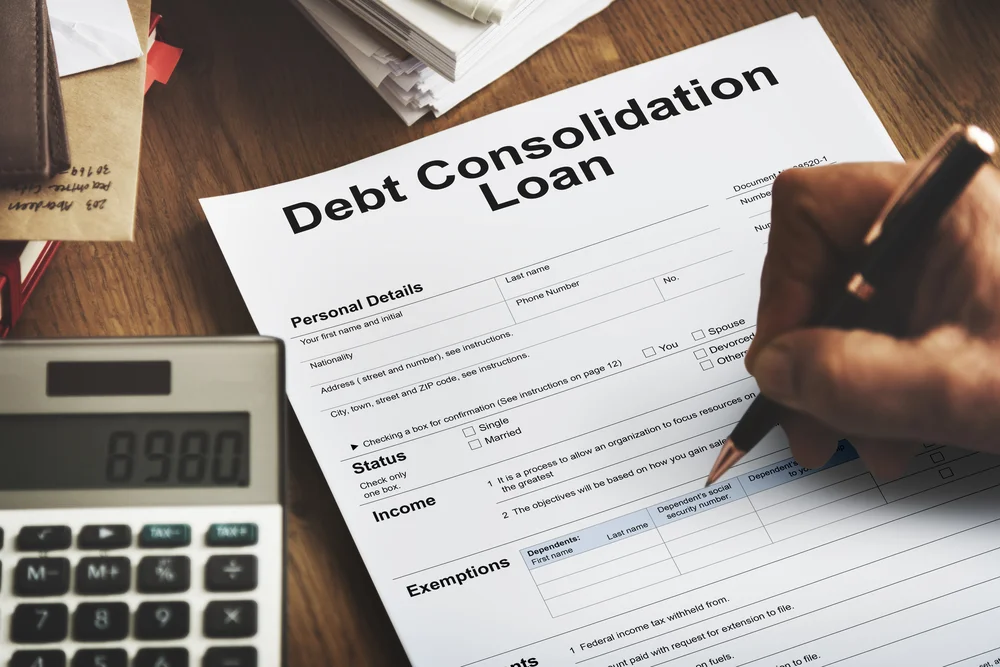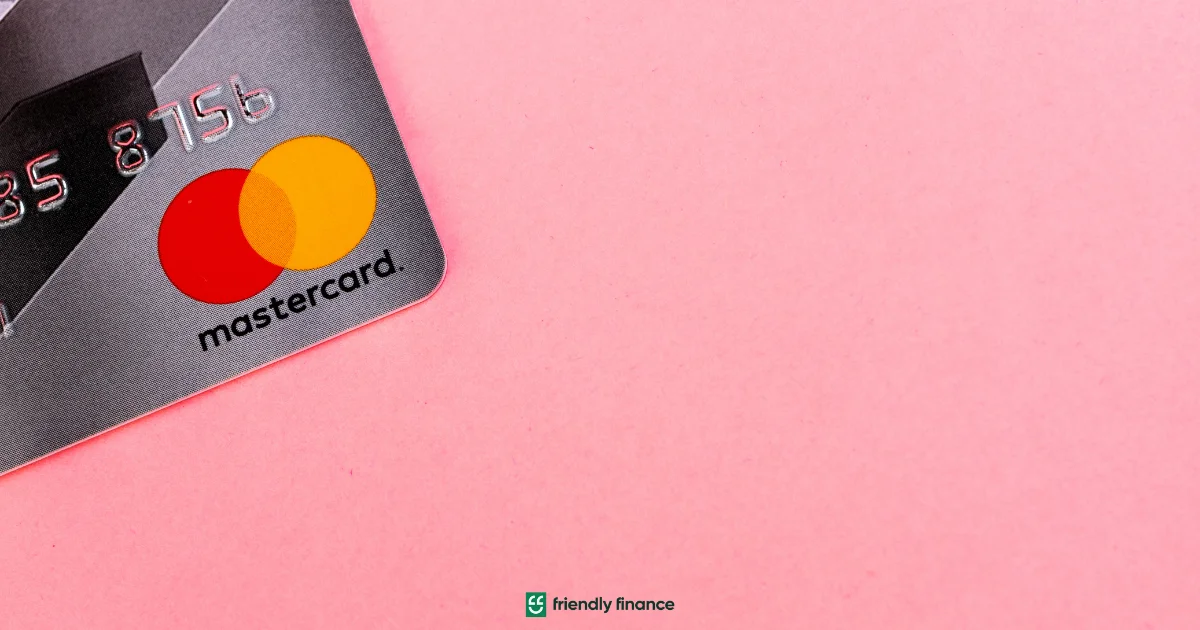Debt Consolidation in Australia: How to Combine Loans and Regain Financial Control
Key Takeaways
Consolidating debt can lower your interest rate and simplify repayments into one manageable schedule.
Common options include personal loans, balance transfer cards, and secured loans.
Choosing the right loan type depends on your credit profile, debt types, and repayment goals.
Juggling multiple debts—like credit card bills, personal loans, and store accounts—can feel like carrying a stack of plates, and one wobble can topple everything.
Debt consolidation gives you the tools to steady the load: combine several high‑interest debts into one manageable repayment, ideally at a lower interest rate, and simplify your financial life. This guide breaks down how debt consolidation works, the debt you can include, the loan types best suited for it, and how to pick the right option.
If you feel overwhelmed by your options, speaking to a free financial counsellor from the National Debt Helpline can be a great first step to understanding the best path for your situation.
But since you are already here, allow us to try and help you take control!
What Is a Consolidation Loan?
A consolidation loan (often called a debt consolidation loan) is a personal loan used to pay off and replace existing debts, usually high-cost ones like credit cards, store cards, or short-term loans. It’s important to note that certain debts, like a mortgage or HECS-HELP student loan, typically cannot be rolled into a standard personal loan for consolidation. A consolidation loan lets you turn multiple monthly payments into a single monthly repayment with a clear end date, making it easier to budget and track progress toward becoming debt-free.
Why Consider Debt Consolidation?
Lower interest than credit cards: Currently, the best consolidation loans in Australia offer rates between 6%–7% p.a., much cheaper than typical credit card rates of around 18+% p.a.
Simplified repayments: One fixed payment replaces many different due dates, reducing the risk of missed payments.
Faster payoff: With disciplined overpayments, a consolidation lets you clear debt before year-end.
Improved cash flow: You may find a better monthly payment fits your budget compared to juggling multiple bills.
Types of Loans to Use for Consolidation
Unsecured Personal Loans
Offered by banks and non‑bank lenders like NAB, ANZ, or ING, these loans require no collateral and typically come with fixed or variable interest rates. ING, for example, offers fixed rates from 6.89%–19.99% p.a., while NAB’s unsecured loans run from 7.49% to 20.49% p.a.. They’re simple to set up, have predictable repayments, and allow extra or early repayments without penalty.
Secured Loans
These require collateral like a car or property; lower risk for lenders means they often offer better loan amounts and interest rates. Wisr, Harmoney, and Latitude all provide options in this category. Just understand that defaulting means risking your asset.
Balance Transfer Credit Cards
These cards offer 0% interest on transferred balances(usually for 12–26 months). For example, ANZ offers 0% p.a. for 26 months. You’ll pay a one-time transfer fee (typically 1–3%), but continuing regular repayments can wipe out your debt within the interest-free window. Be cautious—new purchases often attract higher rates and can reset the payoff timer.
How to Compare Debt Consolidation Loans
What to Look For:
Feature | Why It Matters |
Interest & comparison rates | True cost over loan life—aim for lower than current debt. NAB rates start at 7.49% p.a. |
Loan terms | Choose a loan length that balances affordability and total interest. |
Fees and charges | Watch for establishment costs (~$150–$400), monthly fees, or early repayment penalties. HSBC, for instance, charges a $150 setup fee + $5 monthly + $199 exit fee. |
Repayment flexibility | Options like making overpayments, redraw, or a repayment holiday help manage cash flow. |
Loan amount Minimums | Ensure you can cover your total debt—consolidation loans often start at $5,000. NAB allows up to $55,000. |
Impact on credit score | New loans or balance transfers show up on your credit report, so space out applications to avoid score drops. |
While the table notes the impact on your credit score, it's worth understanding the full picture. Applying for any new loan will cause a small, temporary dip in your credit score due to the credit inquiry. However, successfully managing a single, consolidated loan with consistent on-time payments can be very beneficial to your credit score in the long run, as it demonstrates responsible credit management compared to potentially missing payments across multiple accounts.
Step 0: Address Your Spending Habits

A consolidation loan is a powerful tool, but it doesn't solve the underlying habits that led to debt. Before you apply, it's critical to create a realistic budget and commit to it.
The single biggest reason consolidation fails is when old credit cards are paid off, only to be filled with new debt. To ensure long-term success, view this loan as one part of a bigger plan that includes changing your spending habits and financial discipline.
⭐Read related article: A Comprehensive Australian Guide to Managing Your Money & Household Expenses 2025
Step-by-Step: How to Apply for a Debt Consolidation Loan
Use a loan calculator to compare repayment amounts at different rates and loan terms. Many lenders offer online tools.
Pre‑qualify or get a rate estimate—soft credit checks at ING or NAB allow you to preview rates.
Submit your application, with passport or licence, pay slips, and bank statements.
Review your credit agreement thoroughly—watch out for early repayment fees, arrangement fees, and terms for skipping repayments.
Use the loan to pay off debts in full, and close those old accounts so you don’t fall back into old habits.
Set up a Direct Debit for consistent monthly repayments—personal discipline is still key to success.
Balance Transfer vs Consolidation Loan
While both help reduce the financial strain, they serve different purposes and suit different types of borrowers. Understanding the key differences can help you avoid costly mistakes and choose the option that truly fits your situation.
Balance Transfer Credit Cards: For Short-Term Credit Card Debt Relief

Balance transfer cards are specifically designed for consolidating credit card debt. They work by allowing you to move one or more outstanding credit card balances onto a new credit card offering a 0% p.a. interest rate for an introductory period—usually between 12 to 26 months. On the surface, it sounds like an easy win. But there are catches:
There's typically a 1%–3% fee on the transferred balance.
If you don’t repay the full amount within the promotional period, the remaining balance starts accruing interest, often at rates higher than standard cards (upwards of 20% p.a.).
You might lose interest-free days on new purchases, meaning they start accruing interest immediately.
It only works for credit card debt—you can’t roll in a personal loan, car loan, or payday advance.
A balance transfer card is best suited to disciplined borrowers with a clear repayment plan who can knock out their card balance in full during the 0% window.
Debt Consolidation Loans: Broader, More Flexible Debt Relief

Debt consolidation loans, on the other hand, offer a more comprehensive solution. You can roll together several types of debt—not just credit cards, but also personal loans, BNPL accounts, store cards, and even unpaid bills—into one fixed-term loan with a predictable interest rate and repayment schedule. Here’s why this option works for many people:
You're not racing against a ticking clock. Instead, you agree to a repayment term—say, 3 to 5 years—with fixed monthly repayments.
It removes the stress of managing different due dates and fluctuating interest rates.
You may qualify for a lower interest rate than your credit cards, particularly if your credit score is healthy or you opt for a secured personal loan.
While debt consolidation loans may involve upfront or monthly fees, they don’t come with the same urgent repayment pressure as balance transfer cards. For people with multiple debts or those who need more time and structure to repay, a personal loan can offer both breathing room and clarity.
So, Which One Should You Choose?
Use a balance transfer card if your debts are exclusively on credit cards, you have a good credit score, and you’re confident you can pay them off within the interest-free period. Consider a debt consolidation loan if your debts are varied, your repayments feel scattered and unmanageable, or you need a longer-term structure.
In short, balance transfers are quick fixes for narrow problems, while consolidation loans offer wider solutions for broader debt issues.
When a Consolidation Loan May Not Be Enough
If you’re struggling despite consolidating:
Consider a debt management plan through a not-for-profit service—APRA-regulated, fee-free advice.
Banks also offer hardship arrangements for borrowers in genuine difficulty.
Debt settlement or Individual Voluntary Arrangement may be a last resort, but they can hurt your credit score significantly and may involve legal steps.
A debt consolidation loan can be a powerful tool to regain financial control—but only if you’re committed to sticking to a plan. Make sure you’re comparing interest rates, fees, loan amounts, and repayment flexibility. Channel savings from lower payments into goal-driven budgets, and close old accounts to avoid starting over. With smart decisions and discipline, you can turn a tangled debt situation into steady progress and a clearer, more predictable financial future.
If you are still looking for a debt consolidation loan, consider applying through Friendly Finance and check the "repaying existing debt" option.




